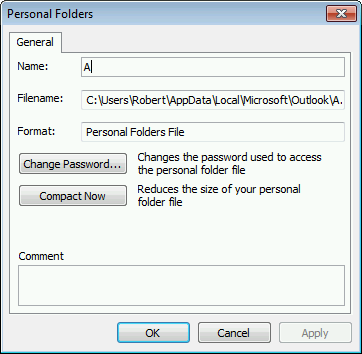

Please like and share this guide to help others.Import Outlook items from a. That’s it! Let me know if this guide has helped you by leaving your comment about your experience. "OutlookNew.pst") and your existing information in Outlook (mails, contacts, calendar, tasks) can be found under the "Personal Folders OLD" group which is the old PST file (e.g. You 're done! From now on, all your new mails, contacts, calendar, and tasks will be stored under the "Personal Folders" group, which is the new empty PST file (e.g. Click Close twice to close all windows.ġ1. Click OK at the "Message Delivery Location" information message.ĩ. Highlight the "Personal Folders" and click Set as Default.ĩ. Rename "Archive Folders" to " Personal Folders" and click OK.Ĩ. Rename "Personal Folders" to " Personal Folders OLD" and click OK.Ħ. Navigate to Windows Control Panel and set the View By: to Small icons.ĥ. Set the NEW PST file as the Default Store Location for Outlook.ġ. Close Outlook and proceed to the next step. "OutlookNew.pst in this example) and the "Personal Folders" is the old (existing) PST file (e.g. * The "Archive Folders" is the newly created PST file (e.g. When the archive process is completed you should see under the "Archive Folders" group, the same list of the folders that you already have under the "Personal Folders" group.

Click OK again to start the archive process.ħ. * Note: At the end of the process, this file will be the default store location for Outlook.Ħ. Type a recognizable name for the new Outlook data file (e.g. Specify a date far back to the past to make sure that no mails are moved to the new PST file. Choose to Archive this folder and all subfolders.ģ. At Archive options, apply the following settings:ġ.


 0 kommentar(er)
0 kommentar(er)
